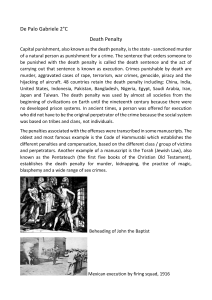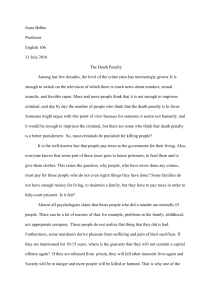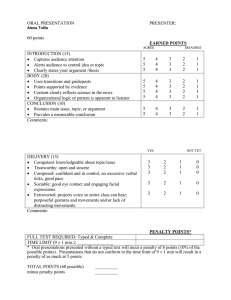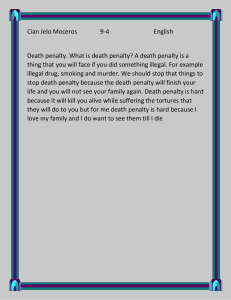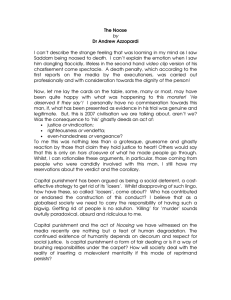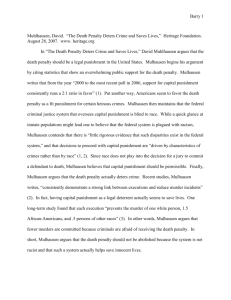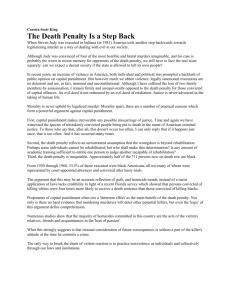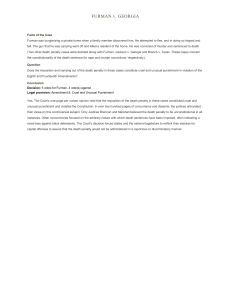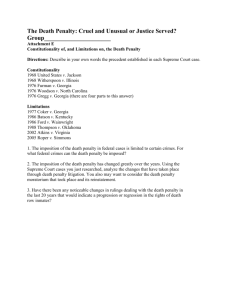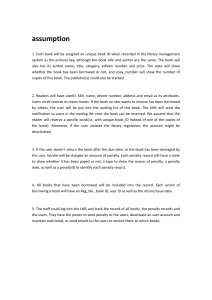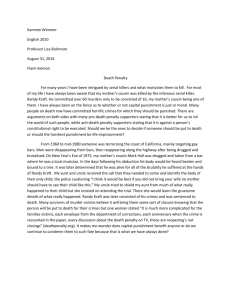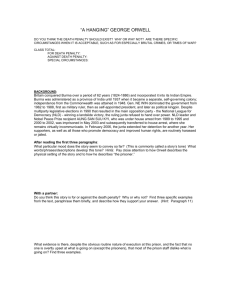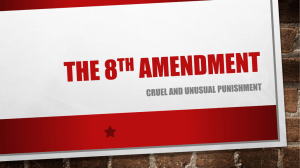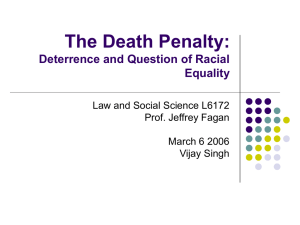CHAPTER 13 QUESTIONS
advertisement
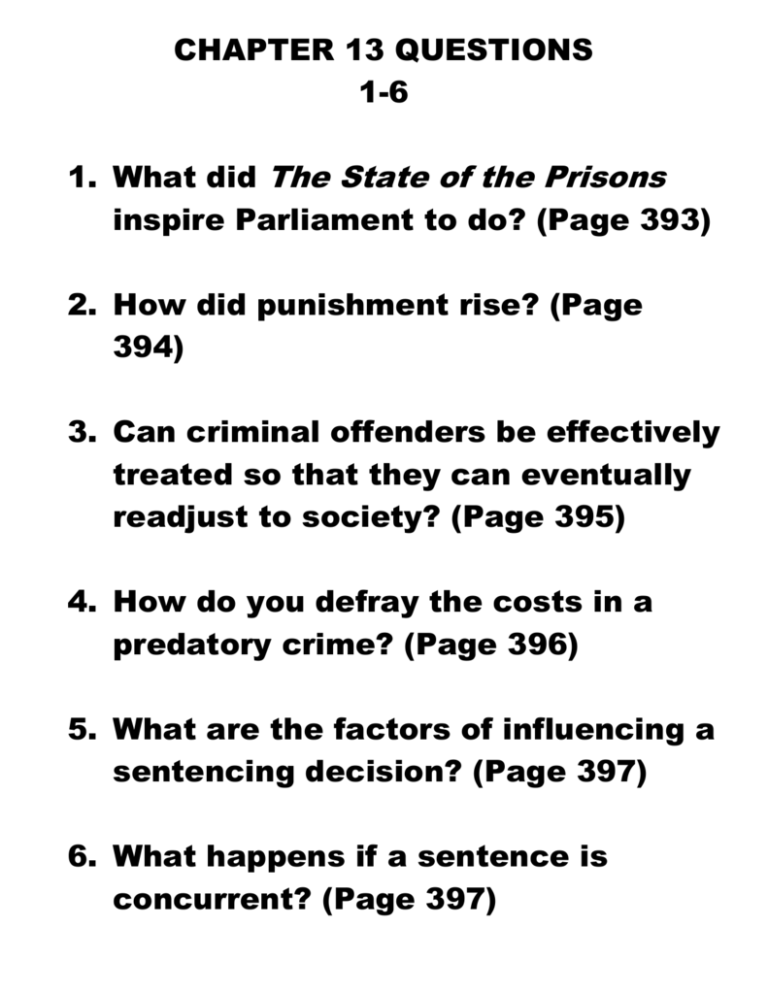
CHAPTER 13 QUESTIONS 1-6 1. What did The State of the Prisons inspire Parliament to do? (Page 393) 2. How did punishment rise? (Page 394) 3. Can criminal offenders be effectively treated so that they can eventually readjust to society? (Page 395) 4. How do you defray the costs in a predatory crime? (Page 396) 5. What are the factors of influencing a sentencing decision? (Page 397) 6. What happens if a sentence is concurrent? (Page 397) CHAPTER 13 QUESTIONS 7-12 7. What is the basic purpose of the indeterminate sentence? (Page 398) 8. What do good-time laws allow inmates to do, and how can it be lost? (Page 399) 9. What are the Minnesota guidelines? (Page 401) 10. What happened to white men after guidelines were implemented? (Page 403) 11. How are people sentenced? (Page 404-405) 12. How long is the average sentence? (Page 405) CHAPTER 13 QUESTIONS 13-18 13. What factors influence judges when they decide on criminal sentences? (Page 406) 14. How is age a factor of sentencing? (Page 409) 15. What has the U.S. Supreme Court limited in capital punishment? (Page 410) 16. How many states use the death penalty? (Page 410) 17. How is the death penalty morally correct? (Page 415) 18. Explain unfair use of discretion? (Page 417) CHAPTER 13 QUESTIONS 19-24 19. How does the death sentence rule out rehabilitation? (Page 419) 20. What happened in the Gregg v. Georgia case? (Page 421) 21. What did the court rule about jurors in the Witherspoon v. Illinois case? (Page 423) 22. What are the 3 methods of the death penalty? (Page 424) 23. What have researchers found about the three methods? (Page 424) 24. What people are not likely to be under the threat of the death penalty? (Page 424)


